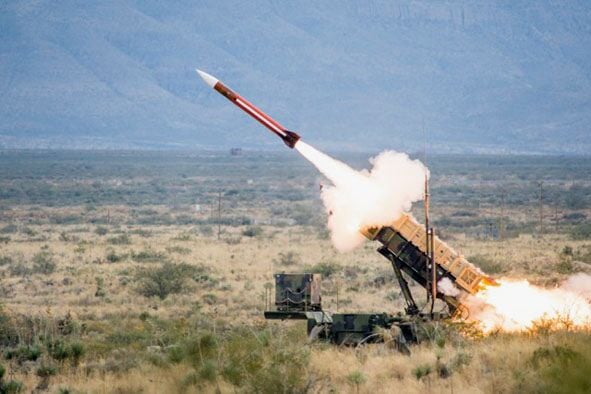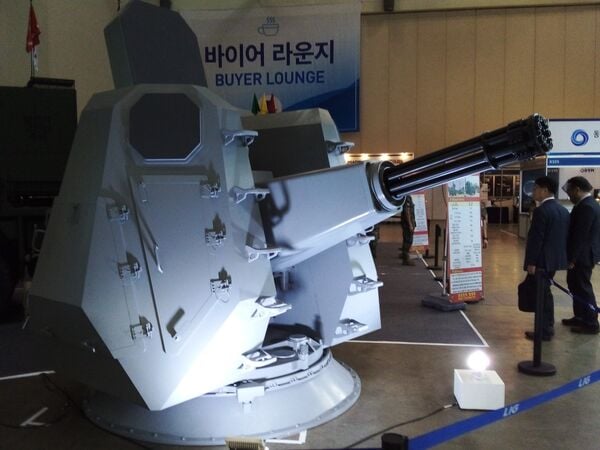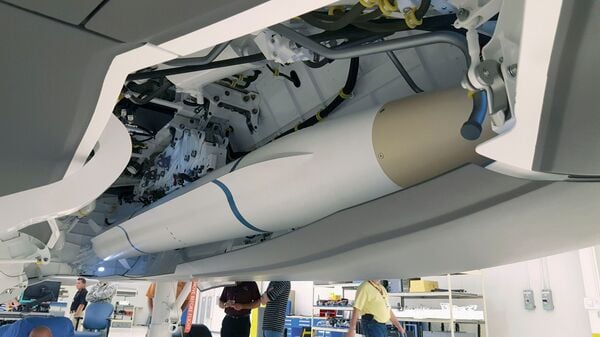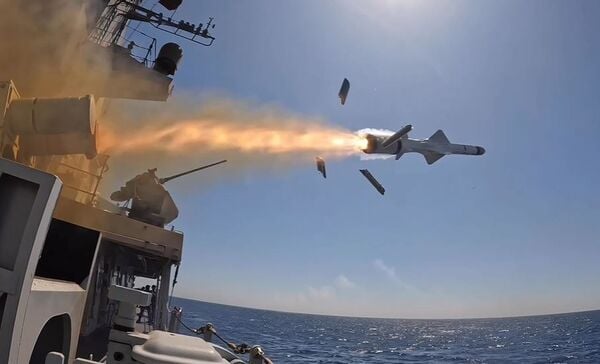- About
- Intara
- Capabilities
- Advisory
- Resources
- News
- Store
Ukraine conflict: Russia's invasion raises short-term consequences for Poland's defence capabilities
07 March 2022
by Dominik Kimla


Under its Wisla programme, Poland is acquiring Patriot missile systems. (Raytheon)
Russia's invasion of Ukraine has created a new geostrategic situation for Poland, which shares a border with Ukraine, Belarus, and Russia. The attack has deteriorated the regional security environment and will have direct consequences for the modernisation of the Polish Armed Forces (PAF).
The ambitious Technical Modernisation Plan (TMP) 2021–35, which was announced in 2019 and covers about 2,000 modernisation programmes, needs to be updated to reflect the new reality. The first lessons from the conflict in Ukraine show that air and missile defence, anti-tank, and rocket artillery capabilities are crucial. The TMP covers these requirements, but its implementation is far from satisfactory. So far, the PAF has procured two out of eight planned IBCS/Patriot mid-range air-and-missile defence batteries within the ‘Wisla' programme, and only one out of three HIMARS rocket artillery squadrons systems (with just 20 fire units) under the ‘Homar' programme.
The situation with modern short-range air defence (SHORAD) systems is even more dire. The ‘Narew' programme is already delayed by six years. Although the Ministry of National Defence (MND) has signed the framework contract with the Polska Grupa Zbrojeniowa (PGZ) consortium for 23 SHORAD batteries, the selection of the Common Anti-air Modular Missile (CAMM) interceptor for the programme is pending approval by the MND. Furthermore, the delivery of the first SHORAD battery is expected no sooner than 2025. In better news, the lowest level of air defence, VSHORAD, is covered by the locally built ‘Poprad' system, which has been delivered to the PAF, as well as ‘Grom' manportable air-defence systems that are in delivery.
In terms of anti-tank capabilities, the situation is more optimistic. Poland procured 2,675 Spike-LR anti-tank guided missiles (ATGMs) and 264 command launch units (CLU) in 2003, and an additional 1,000 Spike-LR ATGMs in 2015. In addition, in 2021 the MND acquired 180 FGM-148 Javelin ATGMs and 60 CLUs. However, the existing quantity of ATGMs is not sufficient to establish a multilayered anti-tank defence and cover all of the PAF's anti-tank needs. There are two main ATGM programmes within the TMP, namely the lightweight, short-range ‘Pustelnik' and heavyweight ‘Karabela,' yet both are already delayed by two years. The local defence sector has developed suitable solutions for both requirements – ‘Pirat' and ‘Moskit LR,' respectively. In this context, it is also worth mentioning that loitering munitions under the ‘Gladius' programme can also be delivered by Poland's WB Group.
Poland needs to significantly speed up its modernisation, and this will be a key test for the newly established Armaments Agency. The MND should urgently finalise a decision regarding an interceptor for the ‘Narew' programme and potentially consider the co-production of the system with an additional Western partner to accelerate its delivery. The second stage of ‘Wisla' needs to be launched without any additional delay, and the PAF must also substantially augment both its ATGM and rocket artillery capabilities by acquiring additional systems. Regarding anti-tank weaponry, the army could acquire both local and international off-the-shelf ATGMs in order to meet time constraints. With regards to the ‘Homar' programme, it is worth considering the procurement of MLRS systems within the United States' Excess Defense Articles as an interim solution before the additional HIMARS units are delivered.
The resources needed to finance these programmes should not be an issue, at least in the short term. According to the draft Homeland Defence Act, approved by the government at the end of February, Poland will increase its defence spending to at least 3% of GDP in 2023, while the additional Armed Forces Support Fund will be established to obtain further funds for arming and modernising the PAF.
This article, originally published on 3 March 2022, was updated with new information.
South Korea to bolster naval ballistic missile, unmanned systems interception capabilities
29 April 2024
by Ridzwan Rahmat


A model of the South Korea-developed CIWS-II on display at MADEX 2023. (Janes/Ridzwan Rahmat)
South Korea's defence procurement agency has announced programmes to bolster its navy's ability to intercept ballistic missiles and unmanned vehicles.
These include a programme to improve the country's indigenous close-in weapon system (CIWS) project undertaken in consideration of recent changes in warfare techniques, said the Defense Acquisition Program Administration (DAPA) in its announcement on 26 April.
South Korea's indigenously conceived CIWS is known as the ‘CIWS-II' and it is being developed by LIGNex1 under a contract awarded in 2021.
It is based on a seven-barrelled Gatling gun system incorporated with a tracking active electronically scanned array (AESA) radar, a four-faced AESA search radar, and an electro-optical tracker. The weapon can fire about 4,200 rounds per minute.
At the 161st meeting of the country's Defense Program Promotion Committee that was held on the same day of the announcement, changes to the CIWS-II programme's quantity and localisation plans were decided on, DAPA said without giving further details.
Netherlands, Poland approved for AARGM-ER SEAD/DEAD missiles
25 April 2024
by Gareth Jennings


An AARGM-ER seen being test fitted into the internal weapons bay of an F-35 combat aircraft. The US has approved the sale of the missile to both the Netherlands and Poland. (Northrop Grumman)
The US government has approved the sale of the Northrop Grumman AGM-88G Advanced Anti-Radiation Guided Missile – Extended Range (AARGM-ER) to the Netherlands and Poland.
Announced by the US Defense Security Cooperation Agency (DSCA) on 24 April, the approvals cover 265 of the suppression of enemy air defences/destruction of enemy air defences (SEAD/DEAD) missiles for the Netherlands for approximately USD700 million, and 360 missiles for Poland for approximately USD1.275 billion. Both approvals cover related equipment, training, and support.
“The proposed sale will improve the Netherlands'/Poland's capability to meet current and future threats by strengthening its self-defence capabilities to suppress and destroy land- or sea-based radar emitters associated with enemy air defences. This capability denies the adversary the use of its air-defence systems, thereby improving the survivability of the Netherlands'/Poland's tactical aircraft,” the DSCA said of both approvals.
Indonesia to restart procurement process for more Exocet missiles
18 March 2024
by Ridzwan Rahmat


An Exocet MM40 Block 3 missile being launched from an Indonesian Navy Bung Tomo-class frigate. The country's latest attempt to replenish its stock of Exocet missiles has been delayed by non-conformity issues. (Indonesian Navy Armada I)
Indonesia will have to restart a process to replenish the country's stock of MBDA Exocet MM40 Block 3 anti-ship missiles after an earlier attempt failed because of licensing non-conformity issues.
A 24 February letter from the Indonesian Ministry of Finance's (MoF's) Directorate General of Budget Financing and Risk Management sent to various departments at the country's Ministry of Defense (MoD) confirmed that a previously granted permission to procure the missiles with foreign loans has now lapsed.
A copy of the letter was provided to Janes on 18 March by sources close to the procurement process.
In the letter, the MoF advised the respective MoD departments to resubmit a request for a total of three programmes for which the permission to take on foreign loans has lapsed, including the Exocet missile procurement.
Russia's invasion of Ukraine has created a new geostrategic situation for Poland, which shares a bor...
Latest Podcasts
Iran Israel analysis
In this podcast Janes analysts discuss the Iranian attacks on Israel on the 14 April. They highlight the military systems used by Iran and the performance and impact of these on Israel. They also discuss the implications of this attack goi...
Listen nowJanes Case Studies
Using Janes Intara to build a common intelligence picture: Russian build up on the Ukrainian border
View Case StudyNews Categories
 Land Details
Land Details